PETA has exposed the cruel fur trade around the world for two decades: Investigators have documented animals being electrocuted, bludgeoned, gassed, and skinned alive. Now, footage captured by animal rights activist Malcolm Klimowicz on five fur farms in Canada confirms that animals are still living in misery and suffering intensely before their fur is turned into coats, collars, and trinkets.
This footage is difficult to watch, but the animals need you to know what happens to them and take action to stop it.
Living in Filth
Minks were forced to live in small, wire-floored cages covered with cobwebs and encrusted with feces. Food was dumped on top of the cages, and mountains of waste and maggot-infested puddles collected underneath them. Such filthy conditions are highly conducive to the spread of deadly diseases, including hemorrhagic pneumonia and distemper. Many of the minks did not appear to have any access to clean drinking water, which can lead to dehydration and urinary tract disorders.
According to veterinary expert Dr. Ingrid Taylor, “It is my professional opinion that the mink at these farms are suffering from extreme conditions of cruelty and neglect. The appalling filth and insect infestations present in the facilities show an obvious disregard for even the most basic principles of sanitation and promote the spread of disease and risk of injury.”
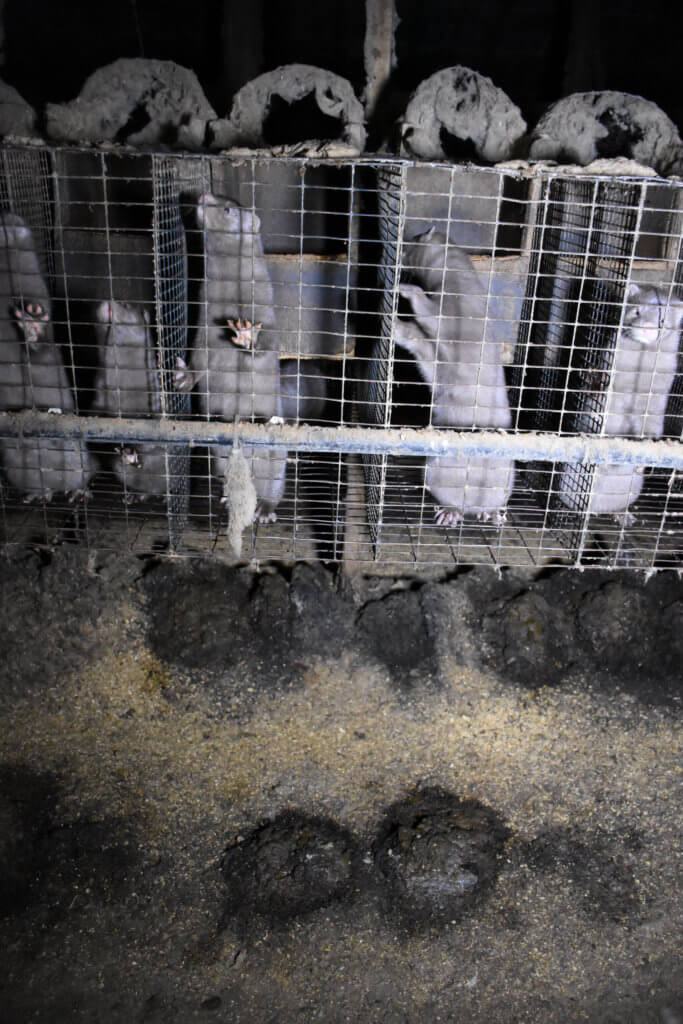
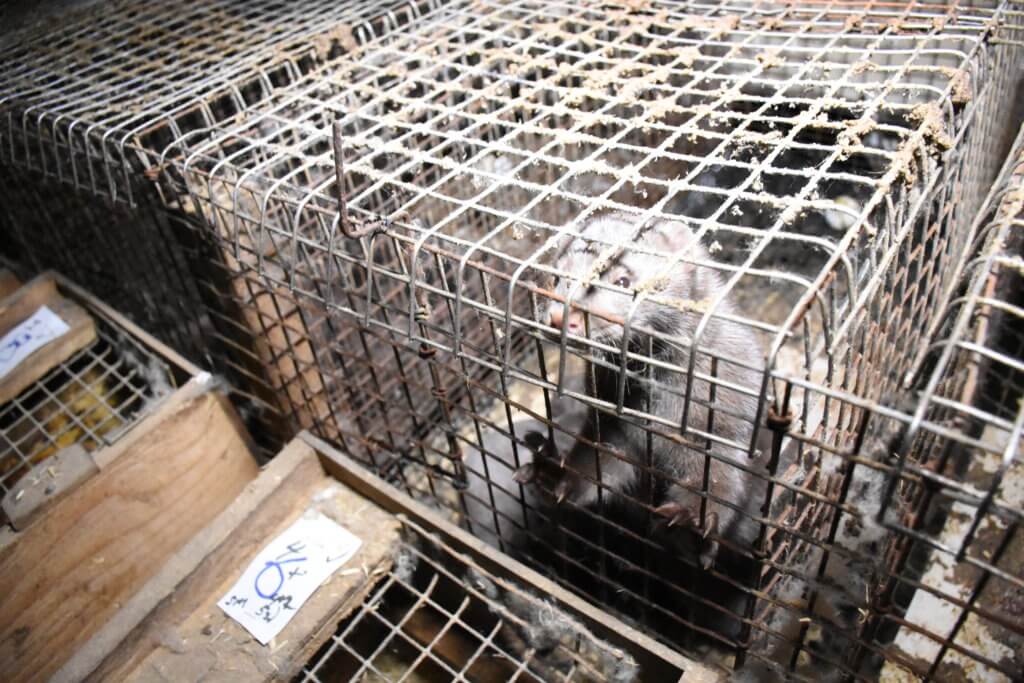
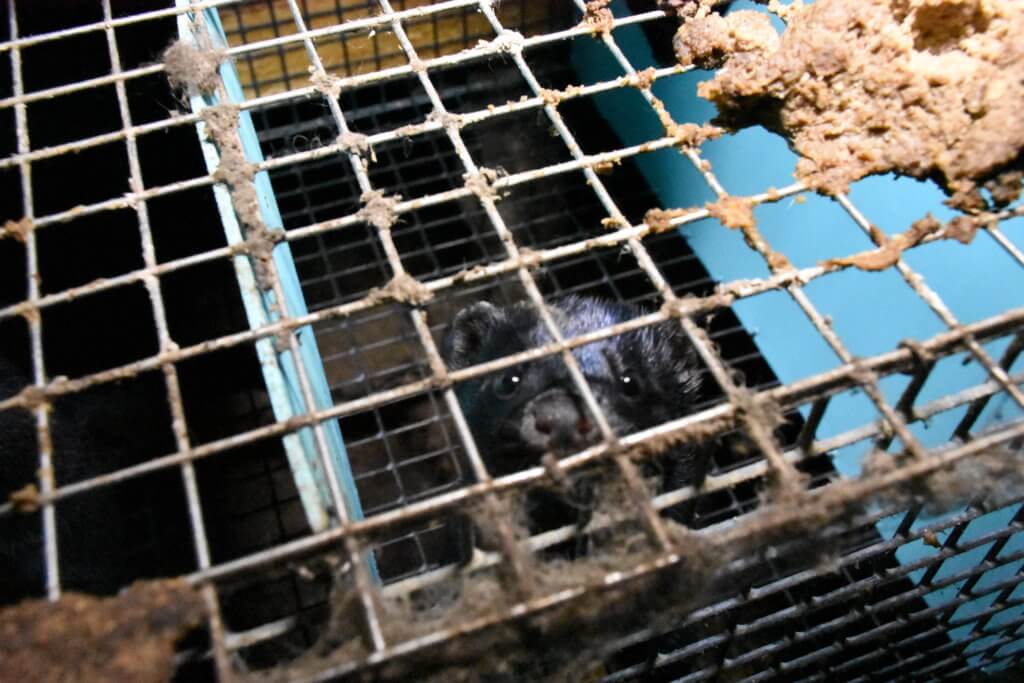
Driven Insane
Minks are intelligent, extremely active animals who are excellent climbers and swimmers. In the wild, they forage for food, move between multiple den sites, and have a home range of several miles near a waterway. Intensive confinement with no chance of escape caused some minks on these farms to exhibit symptoms of “zoochosis,” or captivity-induced insanity, including frantic pacing, circling, and gnawing on cage bars. This neurotic and atypical behavior occurs as a result of depression, frustration, and a lack of mental and physical enrichment. Zoochosis is common on fur farms around the world.
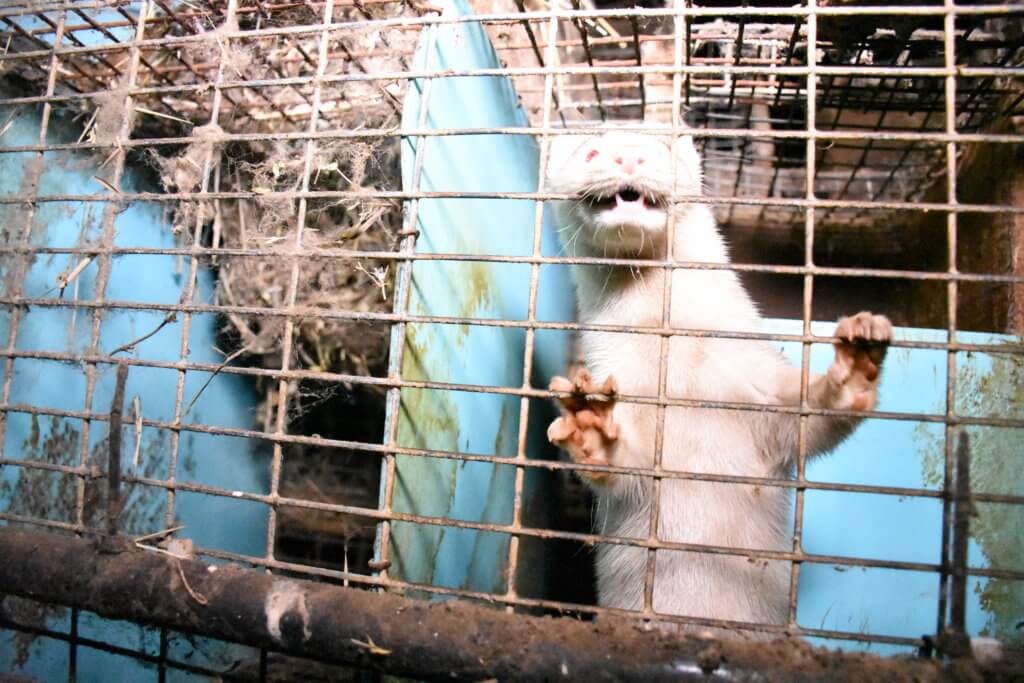
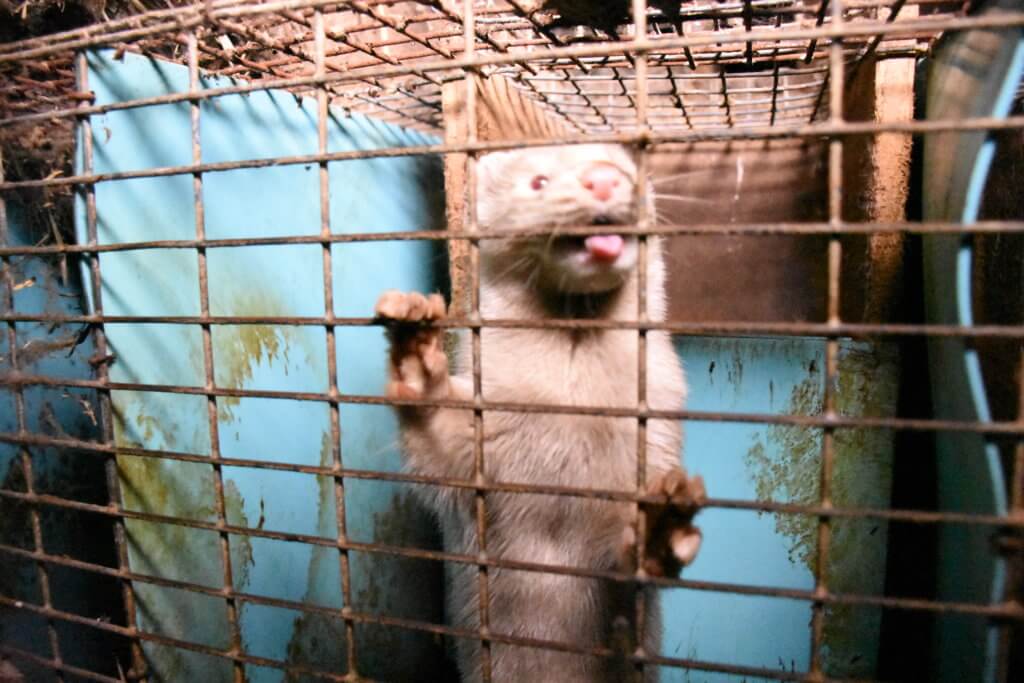
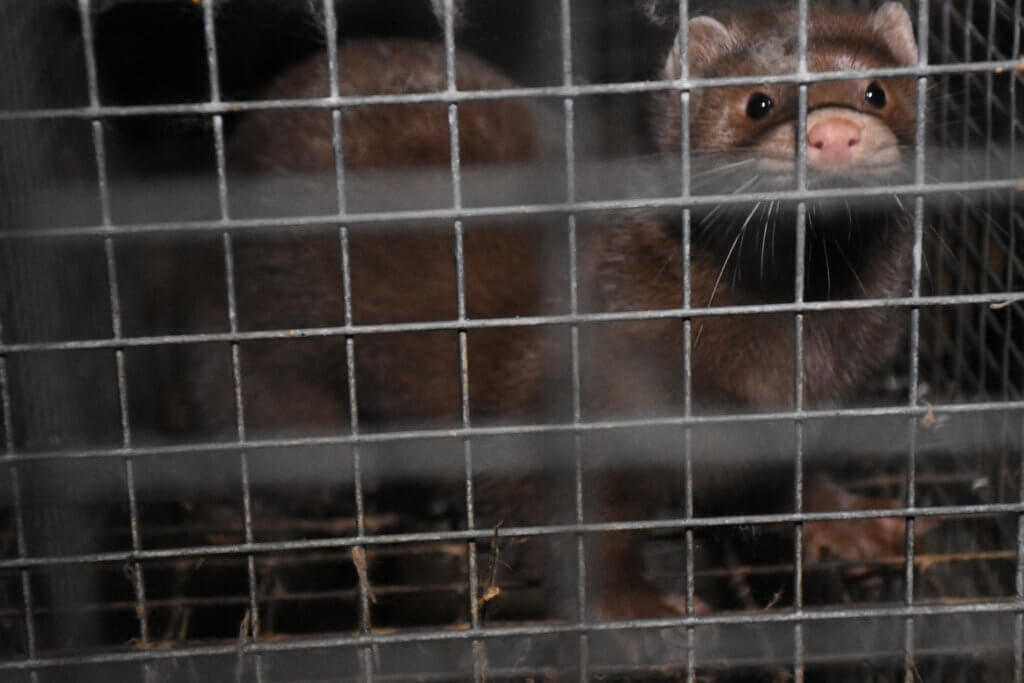
Injuries and Death
One mink’s head had an open sore, and several minks were missing ears. One mink was lying motionless. Live minks had to climb over the decomposing body of a dead cagemate. “Overcrowding and lack of space result in aggression, cannibalism, infanticide, self-mutilation, and stereotypic behavior. In addition, overcrowding leads to chronic stress, gastric ulceration, overproduction of cortisol, immunosuppression, and increased susceptibility to disease,” according to veterinary expert Dr. Christine Capaldo.
Deprived of adequate bedding and nesting materials, the minks had no choice but to lie, stand, and walk on wire flooring. Dr. Taylor stated that “[l]ong-term exposure to wire flooring can damage the pads, tendons, and ligaments of the feet, and cause trauma to the feet and nails, including fractures of the nails, lacerations and punctures, and broken bones.”
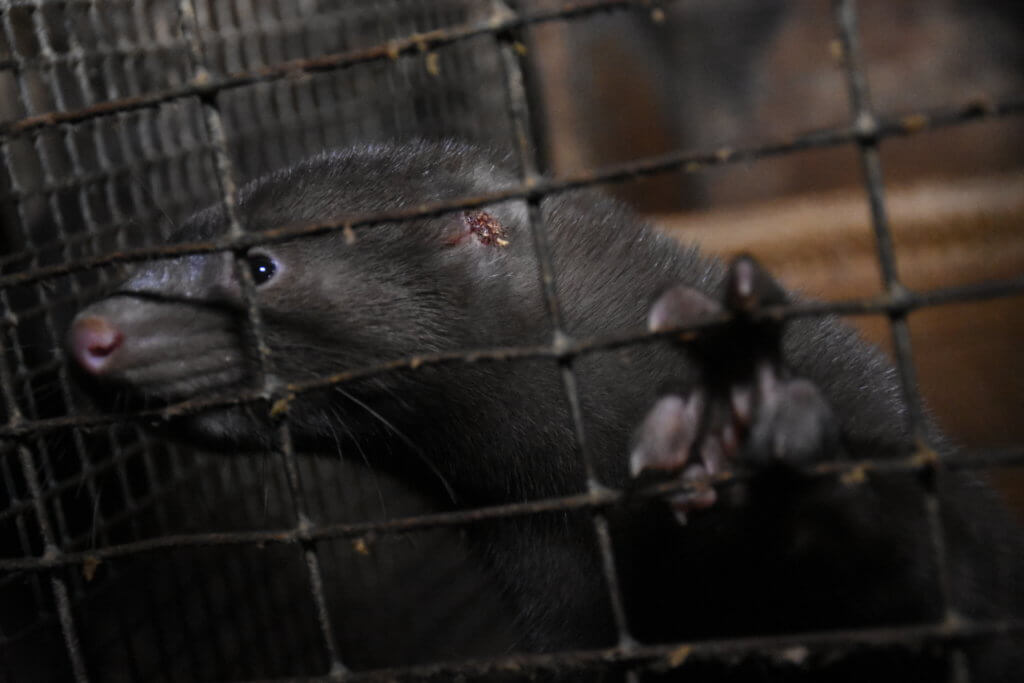
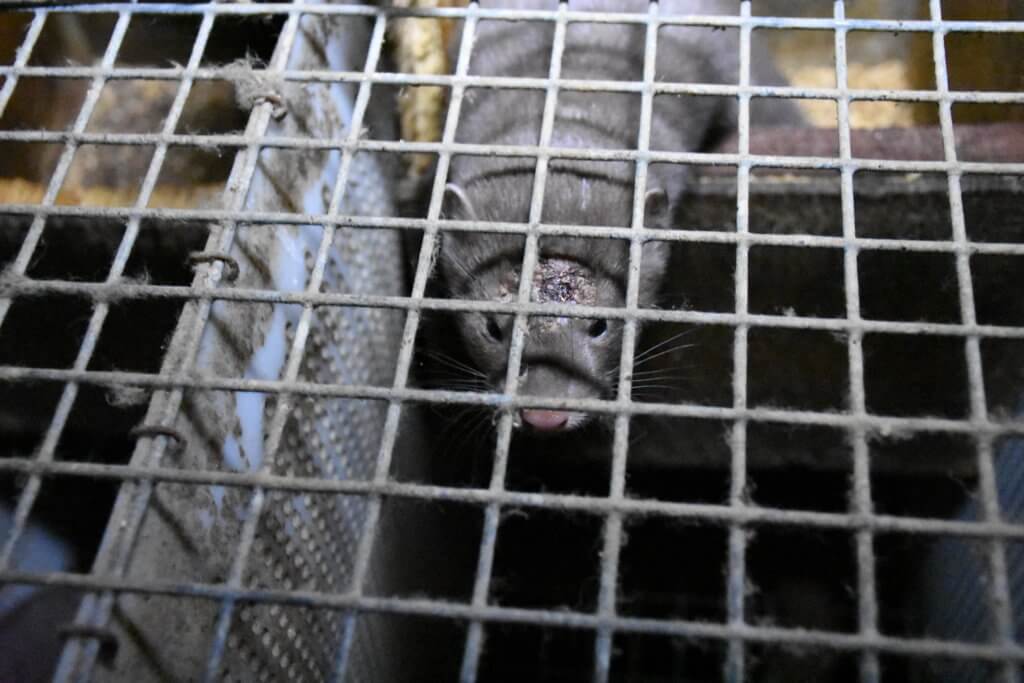

Suffering on a Massive Scale
Eighty-five percent of fur sold today comes from fur factory farms like these, where thousands of animals are confined to crowded, filthy cages before being killed by gassing, electrocution, having their necks broken, or other cruel methods. Canada alone is home to 194 fur farms with over half a million minks. These animals are plagued by fear, stress, disease, parasites, and other physical and psychological hardships on a daily basis—all for a “luxury” item that no one needs.
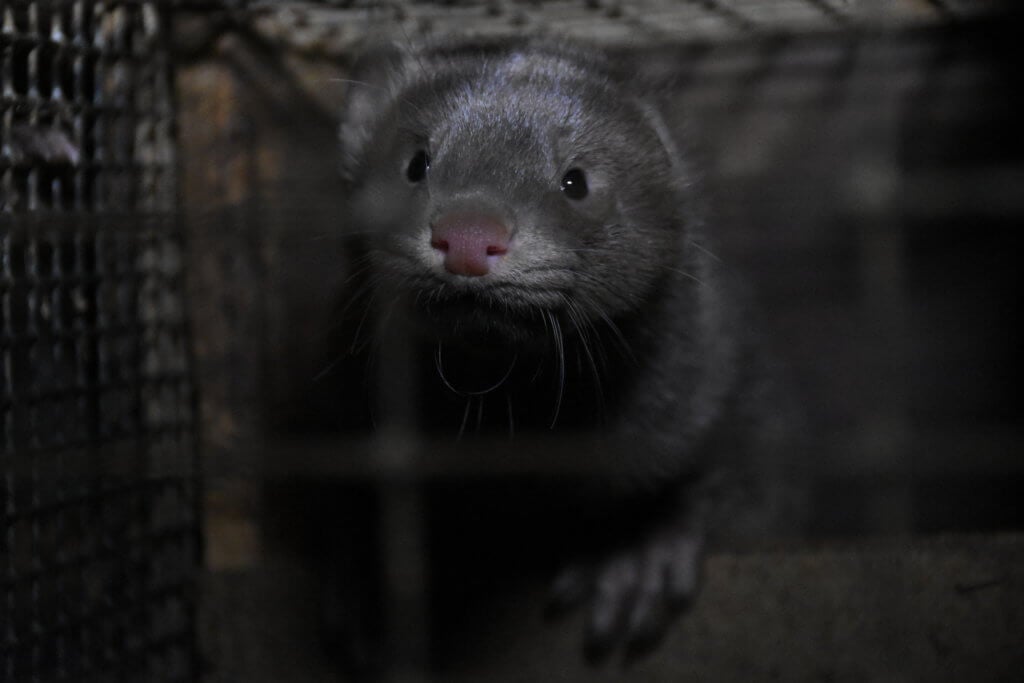
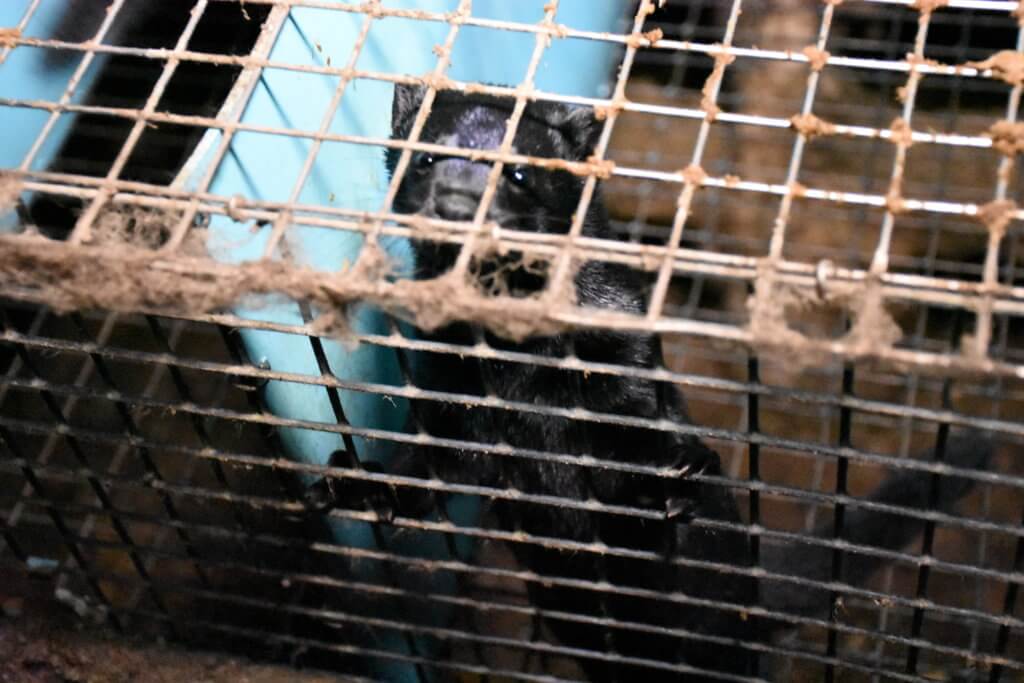
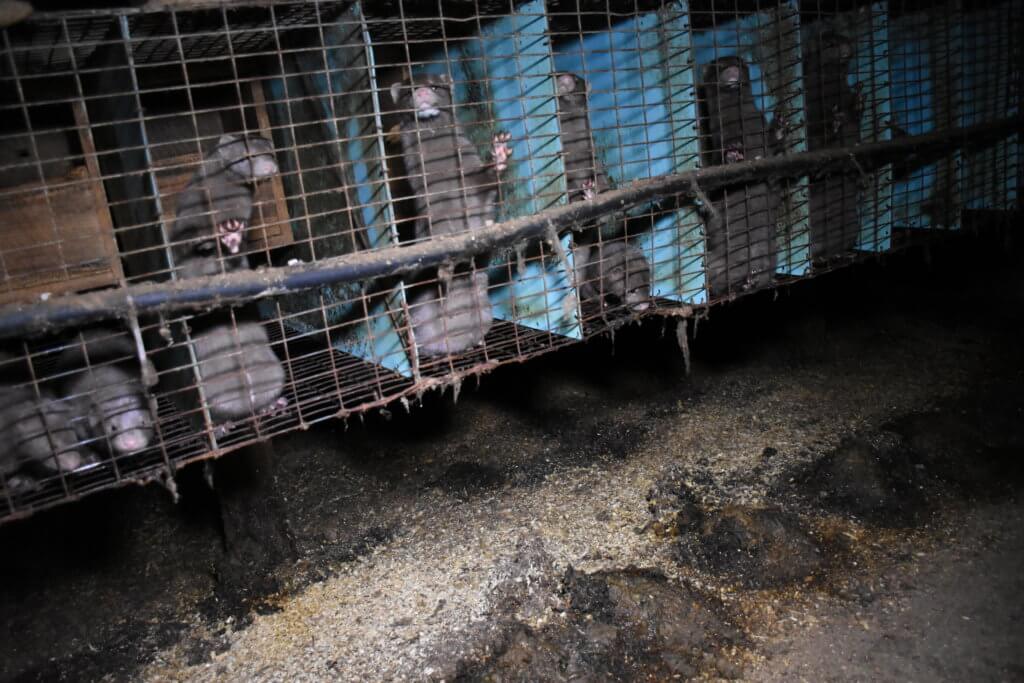
Help Fur-Bearing Animals Now
Klimowicz entered these farms because, like many people, he’d simply had enough. Animals, he said, are suffering to make “stupid clothing decorations,” yet the industry continues to mislead the public by saying that fur farmers “take animal welfare very seriously.”
We can all take matters into our own hands by choosing compassion over cruelty with every purchase: Please, never buy or wear any fur. Tell everyone you know about the cruelty on fur farms by sharing this video.
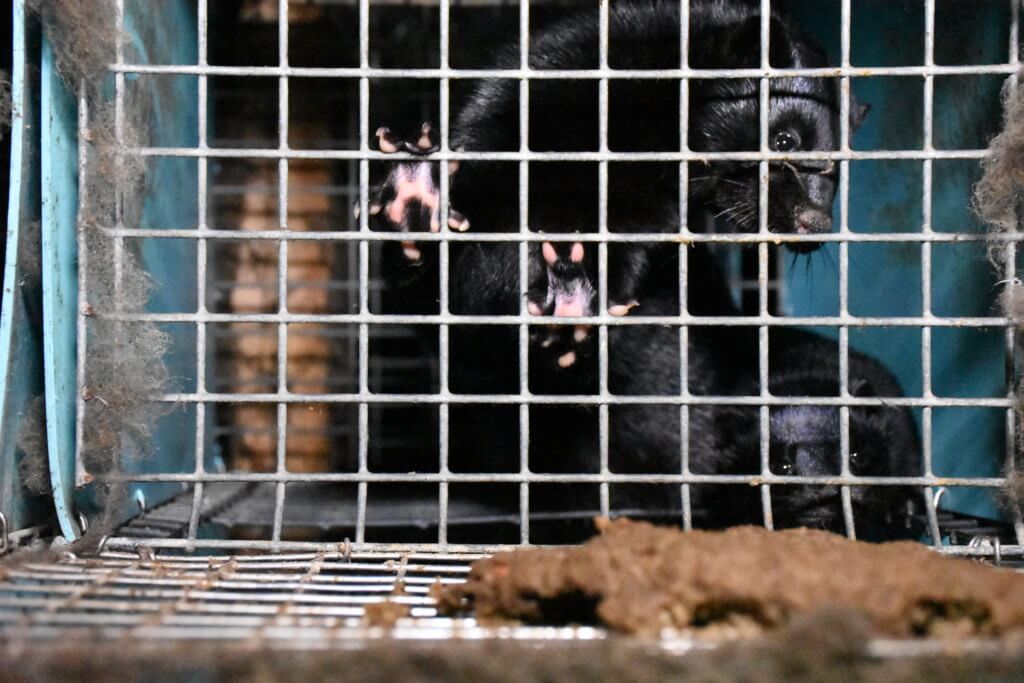
Take Action
Shopbop and other retailers continue to sell real fur despite knowing that animals live in misery before finally being bludgeoned, electrocuted, gassed, and sometimes even skinned alive. Please, help animals like the ones you’ve just seen in this video who are suffering right now and urge Shopbop and others to drop fur immediately!